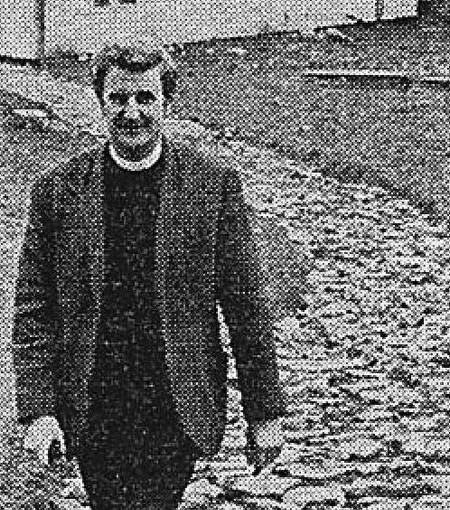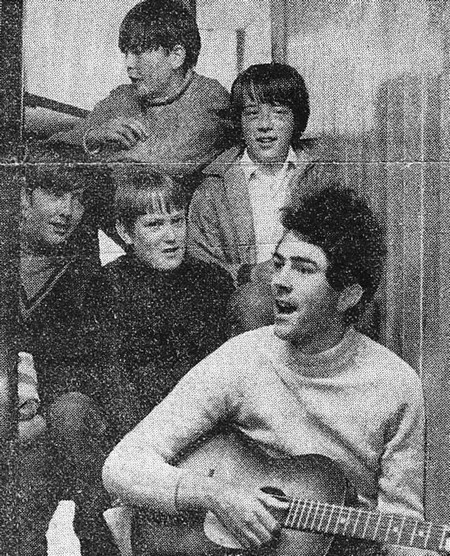Youth Centre
Inauguration
The decline in population, the inaccessibility of the Priory and the presence of a chapel actually on the edge of the village all combine to explain why the church had fallen into disuse by the end of the Second World War. Even for some years until then, the church had only been used once each year, on Whit Sunday, and 1948 saw the last of these occasions.
Disused and neglected, the building soon fell into decay. For at least a decade, it offered shelter not to the faithful but to the birds of the air, bullocks, sheep and goats. It was the superb remote setting and historical associations which prompted the late Ven. Harry Graham, Archdeacon of Richmond, and a few local people to see the Priory’s potential as a place to attract the young.
They asked for a report on the state of the fabric from Mr George G. Pace, the distinguished ecclesiastical architect, and, in 1959 and 1960, working parties of students, sponsored by the SCM in schools, began restoration work on the church, battling against decay and the overgrown churchyard.
In 1960, Archdeacon Graham called a meeting of interested people to inaugurate the scheme. It was proposed that the church be formally closed and a Trust Deed be drawn up placing the building in the hands of four trustees: the Archdeacon of Richmond, the Mayor of Richmond (joint chairmen), the Lord Lieutenant of the North Riding and the Vicar of the parish. This deed, vested in the Ripon Diocesan Board of Finance, was enacted early in 1961.

Renovation and Protest
Writing in 1960, Mr Pace stated “The relationship of the existing buildings at Marrick Priory to each other and to within Swaledale is magnificent and must not be harmed… The repairs to the existing buildings must be carried out in accordance with the best conservation practice”. Within the next twelve months, he drew up plans for converting the building into a residential centre for young people. At this stage, no new building was envisaged and Mr Pace later referred to those early plans as intended for “rough living in a kind of superior cowshed”.
Little progress was made in the next four or five years. Working parties of young people came each summer to do simple restoration work and certain urgent safety work was put in hand. Two unsuccessful applications were made to the (then) Ministry of Education for grant aid towards the project, but a third application in May 1963 resulted in a more positive response. By early 1965, the Diocese of Ripon had appointed a Diocesan Youth Adviser, the Rev. Maxwell Fargus, and he, with the Ven. John Turnbull, who had succeeded Harry Graham as Archdeacon of Richmond, now began to get the project seriously under way.
Department of Education Approval
Visits were made to the Department of Education, Her Majesty’s Inspectorate were called in for consultation, and in September a new meeting of the Trustees and interested people was called, resulting in the setting up of a small action group.
On the advice of the Department of Education and the HMIs, this action group agreed to the adoption of a more comfortable standard of accommodation and housing for a permanent warden. Mr Pace drew up new plans to meet the new standards and to enable the proposed Centre to be used not as a “resting place for youth parties enjoying the local countryside”, but as a properly equipped centre were community-based and experimental learning could take place and a variety of social and educational needs be met.
In May 1966, the Department of Education and Science approved the new plans and accepted the scheme as a regional project. A Management Committee grew out of the former action group, bringing together a wide range of experience and interests; theirs was the task of overseeing the development of the project, advising the architect and being advised by him, deciding upon furnishings and equipment and , in course of time, appointing a warden. They also had to raise the large capital sum needed for the project to match the 50 per cent grant aid from the Department of Education. Here the Committee was very well served by Sir Rupert Hart-Davies as honorary treasurer, and he it was who so successfully directed the appeal for funds.
There was something of a local scandal when it was learnt that some of the building workers had a sideline in selling broken gravestones to form the bar at the Bridge Hotel, Grinton.
Opening and First Warden
On 30th May 1970 the Bishop of Ripon, Dr John Moorman, dedicated the Centre and re-dedicated the Chapel, and the opening ceremony was performed by Lord Normanby, a trustee, who marked the occasion by giving the funds to build a warden’s bungalow on the site. This was followed by the first warden, the Rev. Jonathon Bailey, taking office in March 1971. The mile of access road remained a treacherous track, spelling ruin for those who risked their vehicles, and it cast a blight on the centre when all else seemed well. Negotiation with the County Surveyor’s Department led to the road being brought up to standard for adoption as a county road at the end of 1972.
This last obstacle overcome, the demand to use the centre leapt up. It was evident that the work would continue throughout the winter months and so central heating was installed to meet this welcome but unexpected development.
The voluntary effort, which characterised the early days of the venture, resumed in 1974 when Mr Alan Butterwick, with colleagues from the building industry and friends from youth work, undertook the building of the extension, doubling the size of the kitchen. The Management Committee continues to meet regularly to direct the expanding work of the Priory, which included more than two thousand residents in both 1973 and 1974.
It is not fanciful to notice a link across eight centuries to the present role of Marrick Priory as a centre of community life, hospitality, learning and prayer.
Go to photos – then and now and newspaper articles for more from this period.
The text on this page has been taken from “A History of Marrick Priory”, written in 1975 by Rev. Jonathon Bailey. For a summary history of Marrick Priory please go to the main History page.





